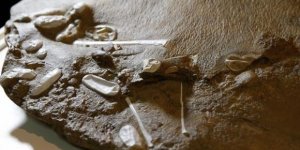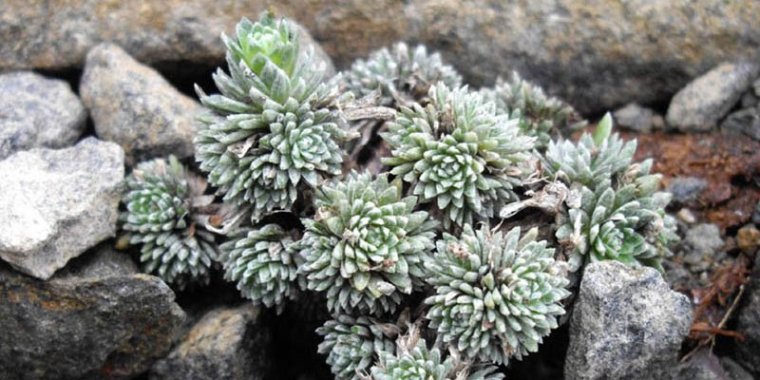| News / Science News |
Rare mineral discovered in plants for first time
Scientists at Sainsbury Laboratory Cambridge University have found that the mineral vaterite, a form (polymorph) of calcium carbonate, is a dominant component of the protective silvery-white crust that forms on the leaves of a number of alpine plants, which are part of the Garden’s national collection of European Saxifraga species.
Naturally occurring vaterite is rarely found on Earth. Small amounts of vaterite crystals have been found in some sea and freshwater crustaceans, bird eggs, the inner ears of salmon, meteorites and rocks.
This is the first time that the rare and unstable mineral has been found in such a large quantity and the first time it has been found to be associated with plants.
Biochemists are working to synthetically manufacture vaterite as it has potential for use in drug delivery, but it is not easy to make. Vaterite has special properties that make it a potentially superior carrier for medications due to its high loading capacity, high uptake by cells and its solubility properties that enable it to deliver a sustained and targeted release of therapeutic medicines to patients.
For instance, vaterite nanoparticles loaded with anti-cancer drugs appear to offload the drug slowly only at sites of cancers and therefore limit the negative side-effects of the drug.
Other potential uses of vaterite include improving the cements used in orthopaedic surgery and as an industrial application improving the quality of papers for inkjet printing by reducing the lateral spread of ink.
Vaterite was often associated with outer space and had been detected in planetary objects in the Solar System and meteorites.
Vaterite is not very stable in the Earth’s humid atmosphere as it often reverts to more common forms of calcium carbonate, such as calcite. This makes it even more remarkable that we have found vaterite in such large quantities on the surface of plant leaves.
The microscope analysis of the plant material came up with the exciting discovery that some plants were exuding vaterite from “chalk glands” (hydathodes) on the margins of their leaves.
The plants producing vaterite were from the section of Saxifraga called Porphyrion. Further to this, it appears that although many species in this section produced vaterite along with calcite, there was at least one species, Saxifraga sempervivum, that was producing pure vaterite.
As well as producing vaterite, Saxifraga scardica has a special tissue surrounding the leaf edge that appears to deflect light from the edge into the leaf. The cells appear to be producing novel cell wall structures to achieve this deflection. This may be to help the plant to collect more light, particularly if it is growing in partly shaded environments. (University of Cambridge)
YOU MAY ALSO LIKE






